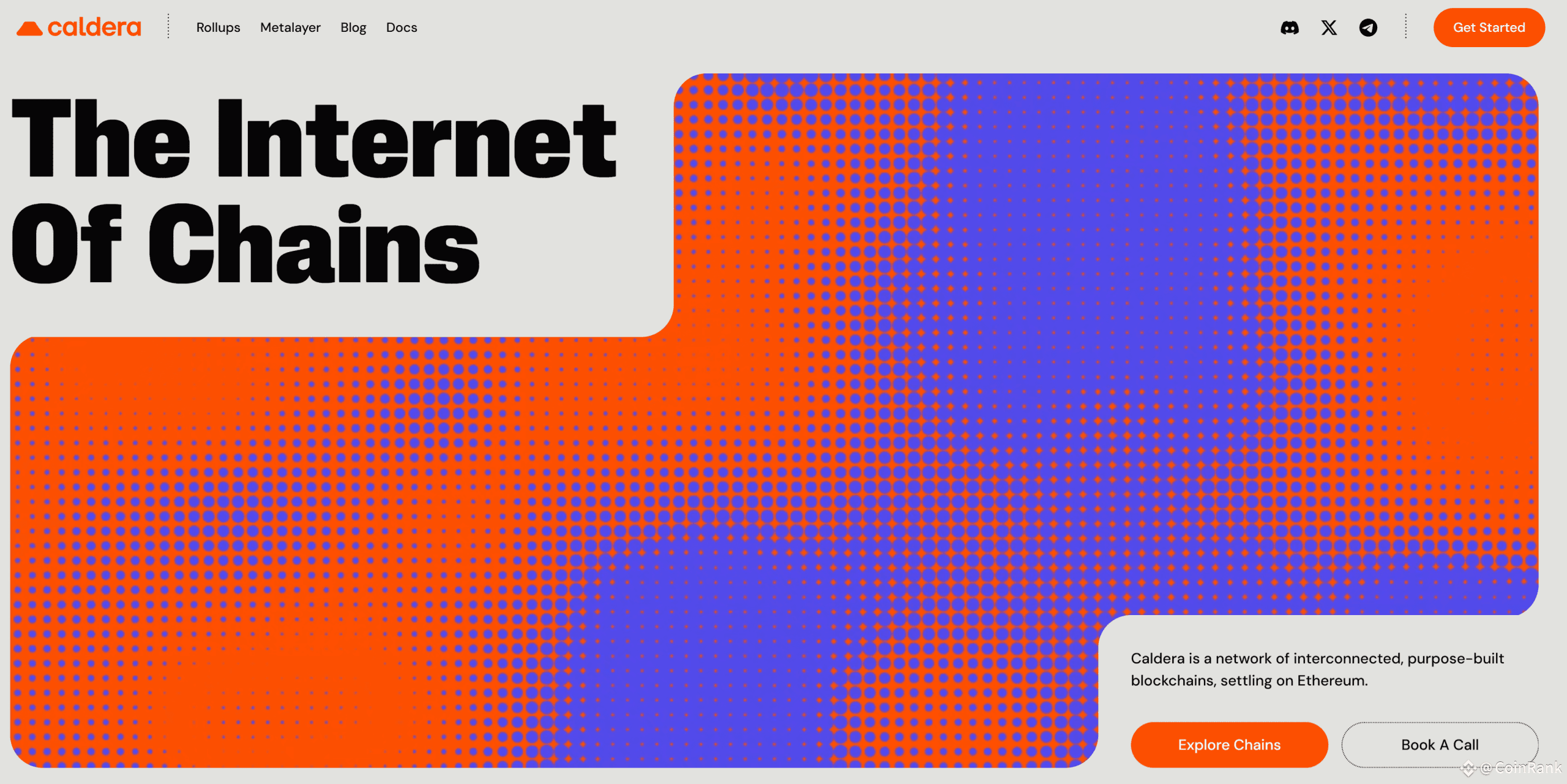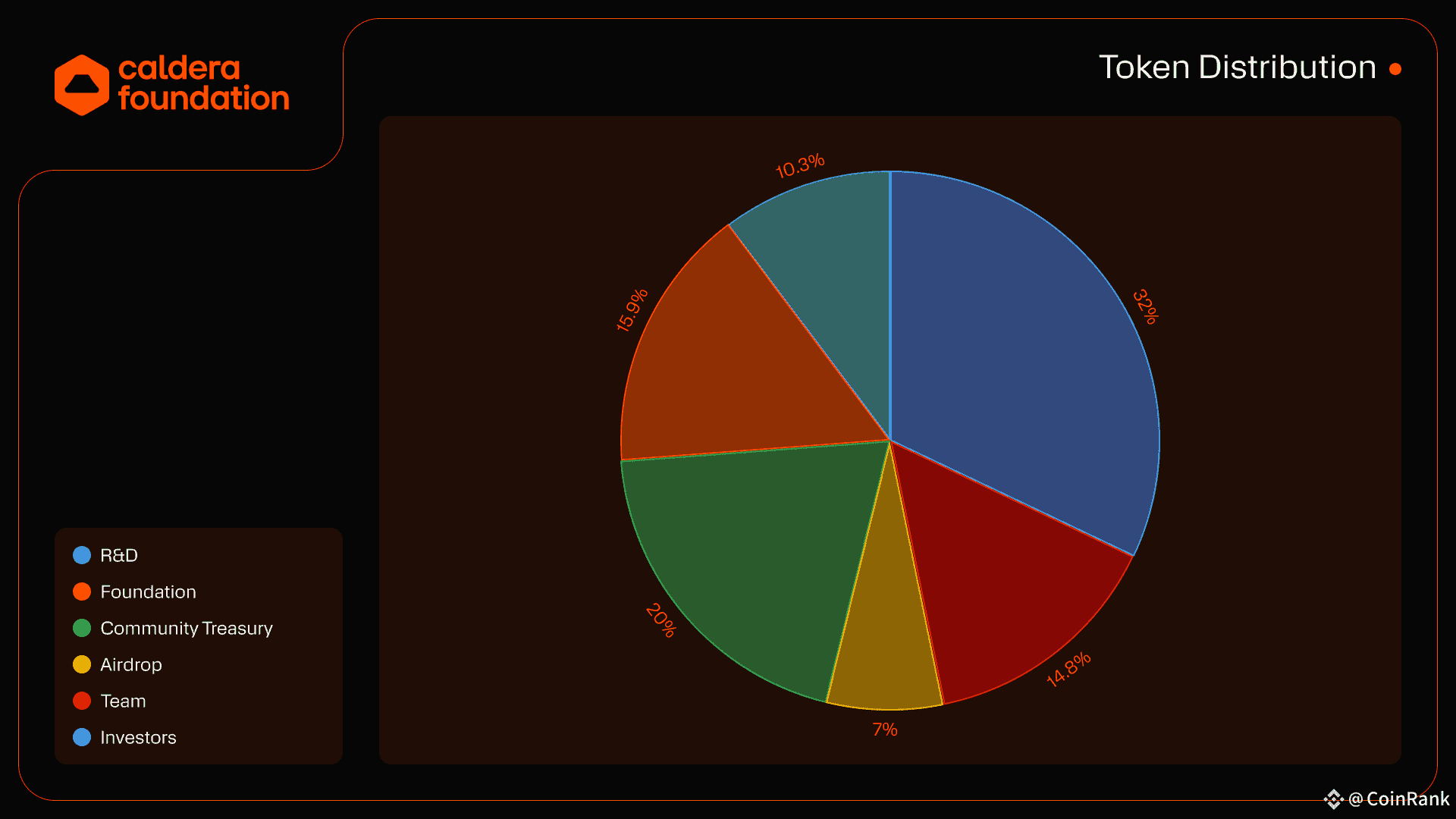Caldera (ERA) offers developers a highly flexible RaaS solution, integrating multiple rollups for shared liquidity and efficient cross-chain communication.
The ERA token powers transaction fees, staking security, and governance, aligning incentives across the Caldera ecosystem.
Backed by strong VC support and unique multi-VM flexibility, Caldera aims to become a leading Layer 2 governance asset despite market competition.
Caldera (ERA) is a Rollup-as-a-Service platform enabling custom Ethereum Layer 2 rollups with modular flexibility, cross-chain interoperability, and its native governance token, ERA.
WHAT IS CALDERA (ERA)?
Caldera (ERA) is a Rollup-as-a-Service (RaaS) platform designed to make deploying and managing custom Ethereum Layer 2 rollups easier than ever. Whether it’s Optimistic Rollups or ZK Rollups, developers can use Caldera to quickly launch tailored rollups with full control over gas tokens, data availability layers (such as Celestia or NEAR), and tech stacks (like Arbitrum, Optimism, or zkSync). By integrating multiple rollup chains into a unified framework, Caldera enables shared liquidity, efficient cross-chain communication, and a consistent user experience across ecosystems.

What sets Caldera apart is its highly modular flexibility. Each rollup can choose its execution environment (EVM or SolanaVM), preferred data availability layer (Ethereum mainnet, Celestia, NEAR, etc.), and even select between native ERC-20 tokens or ETH for gas fees. This level of customization allows projects to optimize for transaction speed, cost efficiency, and security parameters according to their unique needs.
To date, Caldera (ERA) supports over 50 rollup chains, manages a total value locked (TVL) ranging from $400 million to $600 million, and serves more than 27 million wallets. This scale not only underscores its importance in Ethereum’s scaling landscape but also reflects a solid foundation for continued ecosystem growth.
Caldera’s product suite is expanding with the launch of the Caldera Bridge Preview.
The first consumer product built on the Metalayer, powered by $ERA.
A smart bridge aggregator that simplifies cross-chain transactions across the Caldera ecosystem and major liquidity hubs. pic.twitter.com/2e1Hgv3NO9
— Caldera (@Calderaxyz) July 21, 2025
>>> More to read: What is LayerZero & ZRO? How It Works
HOW CALDERA (ERA) WORKS
Caldera (ERA) operates through two core components: the Rollup Engine and the Metalayer.
✅ Rollup Engine
The Rollup Engine streamlines the process of building and deploying application-specific blockchains. It enables developers to fine-tune performance metrics such as throughput, latency, privacy, and cost. Thanks to its modular architecture, the engine can integrate with a wide range of virtual machines, data availability layers, and customizable modules—positioning Caldera (ERA) as a leading player in the modular blockchain movement.
✅ Metalayer
The Metalayer serves as Caldera’s interoperability backbone, designed to simplify interactions across its ecosystem. Acting as a seamless communication bridge, it facilitates smooth, intent-based cross-chain transactions while allowing all connected blockchains to share liquidity. This interoperability protocol transforms otherwise isolated networks into a unified, on-chain internet.
>>> More to read: Succinct Explained: What is PROVE?
CALDERA (ERA) VS ETHEREUM
📌 Caldera (ERA)
Built on advanced rollup technology (such as OP Stack and Arbitrum Orbit), Caldera (ERA) delivers a flexible, high-performance Layer 2 execution environment with extremely high throughput and low transaction costs. It supports payments using the universal ERA cross-chain gas token, making it ideal for next-generation applications that require customization, scalability, and interoperability—such as gaming, DeFi, and SocialFi.
📌 Ethereum Mainnet (Layer 1)
Architecture: A monolithic, general-purpose blockchain serving as the global settlement layer for the digital asset economy.
Performance: Throughput of around 15–30 TPS, with network congestion and delayed confirmations during peak usage.
Cost: High and volatile gas fees, which can be a significant barrier for everyday users.
>>> More to read: ERC-7943: THE UNIVERSAL RWA TOKEN STANDARD THAT COULD TRANSFORM ETHEREUM
WHAT IS $ERA?
$ERA is the native utility and governance token of Caldera (ERA), designed to align incentives between developers, users, and the broader community. Within the Caldera ecosystem, ERA serves three main purposes:
➤ Transaction Fees – Acts as the universal gas token for all Caldera-powered rollups, streamlining fee payments and liquidity flow without the need for multiple tokens.
➤ Staking – Holders can stake ERA to secure cross-chain message verification, support fraud-proof systems, and earn rewards. Staking also enhances network security and grants governance privileges, such as double voting power for locked tokens.
➤ Governance – Powers on-chain governance, allowing holders to vote on protocol upgrades, fee structures, ecosystem grants, and the election of subcommittees (e.g., the Technical Security Committee).
🪙 ERA Tokenomics
Token Name: Caldera (ERA)
Total Supply: 1,000,000,000 ERA
Max Supply: 1,000,000,000 ERA
Circulating Supply: 148,500,000 ERA (14.85% of total supply)
Contract / Network Details:
BNB Chain: 0x00312400303d02c323295f6E8b7309bc30FB6BcE
Ethereum: 0xE2AD0BF751834f2fbdC62A41014f84d67cA1debde
At launch, ERA had a fixed total supply of 1 billion tokens, with most allocations distributed during the Token Generation Event (TGE). To encourage long-term commitment, allocations for the team and investors follow multi-year vesting schedules.

✏️ Token Distribution
Investors – 32.075%
Core Team – 14.75%
R&D – 10.235%
Foundation (Community & Treasury) – 35.94%
Airdrop – 7.00%
>>> More to read: What is Zebec Network? $ZBCN Guide
CALDERA (ERA) FUTURE OUTLOOK
Caldera (ERA) has quickly emerged as a go-to provider for rollup infrastructure, powering dozens of active Layer-2 chains and managing hundreds of millions of dollars in total value locked (TVL). The launch of ERA marks a pivotal shift toward a token-governed ecosystem. To sustain momentum, Caldera must deliver on its Metalayer interoperability vision, attract high-impact dApps, and roll out compelling staking or utility programs to drive demand for ERA.
On the positive side, Caldera benefits from strong venture capital backing, unique multi-VM flexibility, and a native cross-chain bridge—an advantage many competitors lack. These strengths position ERA to secure a meaningful role in the rapidly expanding rollup landscape. However, market saturation and evolving regulatory scrutiny could slow adoption or dampen token sentiment.
For investors, key metrics to watch include on-chain data, TVL trends, new rollup launches, governance proposals, and ERA price performance in spot markets. If Caldera continues to deliver robust developer tools and foster an engaged builder community, ERA could evolve into a premier governance asset for the Layer-2 sector.
ꚰ CoinRank x Bitget – Sign up & Trade!
Looking for the latest scoop and cool insights from CoinRank? Hit up our Twitter and stay in the loop with all our fresh stories!
〈What is ERA? Caldera’s Ecosystem Guide〉這篇文章最早發佈於《CoinRank》。


